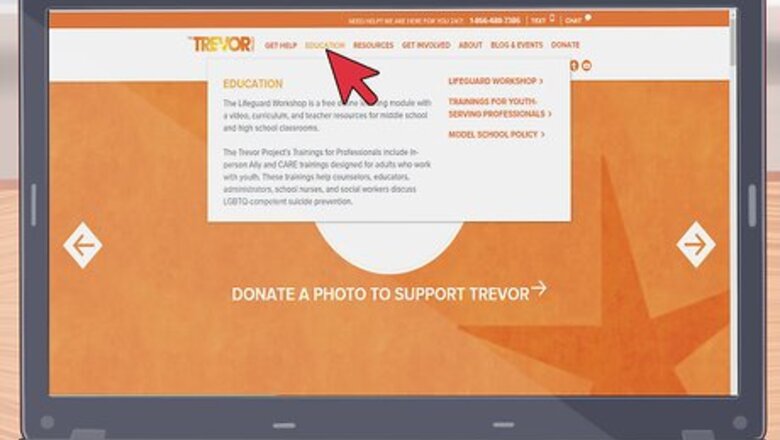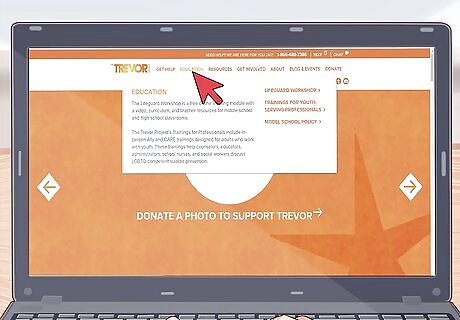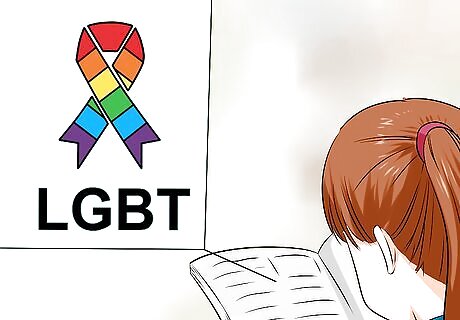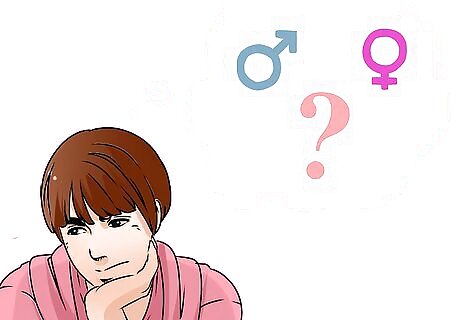
views
Understanding Sexual Orientation

Understand what sexuality is. Your sexual feelings, thoughts, attractions, and behaviors toward other people are all part of your sexuality. Gender identity involves being a man, woman, or nonbinary person, for example. Sexuality (sexual orientation) is who you're attracted to.

Think about different sexualities. A lesbian is a woman or someone of a feminine gender who is exclusively attracted to women or people of a feminine gender. Some lesbians do not partner with anyone other than other women, however some partner with nonbinary people. A gay person is someone who is exclusively attracted to members of their own gender and the phrase is more commonly applied to men who are exclusively attracted to other men, but can also apply to women and nonbinary people. The term can also apply to people who are or are attracted to nonbinary people whose gender is masculine/feminine. A bisexual person is someone who is attracted to more than one gender. Before the publishing of the "Bisexual Manifesto" in 1990, it was widely assumed that bisexual people were only attracted to cisgender men and women. Since then, the phrase has come to refer to those who are attracted to more than one gender. Bisexual people, like people of any sexuality can be attracted to trans men and women too. Anyone who isn't heterosexual may refer to themselves as queer. Being queer indicates that a person is not straight, but it does not reveal who they are or are not attracted to. While the term "queer" is sometimes used as a derogatory term, many in the LGBTQIA+ community have reclaimed it in recent years. An asexual person has no or minimal sexual attraction to other people. It's a spectrum, which means that some asexuals will experience greater attraction than others, but being on the asexual spectrum implies that sexual attraction isn't a regular aspect of your life. Greysexuality, also known as graysexuality, is a type of asexual identity. Someone who identifies as gray/graysexual may be attracted to other individuals on rare occasions, but not so infrequently that they consider themselves asexual. A pansexual person is attracted to people of all genders. This may sound similar to bisexuality, but it is not the same. Someone who identifies as bisexual, for example, isn't necessarily attracted to persons of all genders (simply because they're attracted to more than one). A pansexual person, on the other hand, could be attracted to anyone, and frequently describe their attraction as being regardless of gender. Demisexual refers to someone who is only attracted to other individuals after they have made an emotional bond with them. A demisexual person, like asexual and pansexual people, can be of any gender, and who they are attracted to after they feel emotionally linked has nothing to do with the term. Nonbinary people who are attracted to women, exclusively or not, are referred to as trixic. Nonbinary people can also use the typical labels, such as gay and bisexual. Nonbinary people who are attracted to men, exclusively or not, are referred to as toric.

Recognize the differences between sexual and romantic attraction. When talking about sexual orientation, it's important to distinguish between romantic and sexual attraction. It's important to understand the differences between them because, while they normally go together—that is, people prefer romantic relationships with persons of the same gender or genders to whom they are sexually attracted to—for some people, the two are distinct or dissimilar. A person may be sexually attracted to one gender but dislike the way relationships with that gender play out, or they may appreciate the relationship dynamic with that gender but dislike sexual acts with that gender.

Acknowledge fluidity. You can alter your sexual orientation at any point in your life. Your sexuality may be shifting if you're feeling a shift in your personal attraction. That isn't a problem at all. For one thing, as we become older, we learn to know ourselves better and may be able to recognize aspects of ourselves that we previously couldn't. Furthermore, as we grow older, our priorities shift. What you once considered appealing in others may now be repulsive to you. Some people's sexuality is constantly shifting. Those individuals may regard themselves as sexually fluid for the rest of their lives.
Understanding Your Identity

Consider what you picture in your mind's eye when you close your eyes and imagine your ideal spouse. Is it a specific gender? If so, do they have a different gender from the folks you've previously partnered with?

Bring up the subject with a loved one if you feel comfortable doing so. Choose a friend or family member you know you can rely on, who isn't homophobic and will look out for your best interests. Let them know how you're feeling and that you're not sure about your orientation. Don't feel obligated to leave the conversation with a label—you have all the time in the world to figure it out if you ever need to.

Decide if you want to come out. The term 'coming out' is frequently used to describe sexuality discussions. The majority of the stories we hear about LGBTQIA+ people revolve around how and when they 'came out,' which may make it feel like a big deal. While this may feel natural to some, it is not for everyone. Because you are the most important person in this scenario, don't feel obligated to do or say anything that puts the needs of others ahead of your own. It's completely up to you whether, when, and how you discuss your sexuality. If you are in a more supportive environment, you can also choose to treat your sexuality as a matter of fact.



















Comments
0 comment